Daytime Warbler Migration in Fall along Lake Superior's North Shore
The scientific paper I presented at a joint meeting of the Cooper and Wilson Ornithological Societies on May 16, 1991. It's quite dated, but I'm proud of it.
Spoiler alert: This paper was awarded the Frances F. Roberts Award—for best student paper! But that was a long time ago, in a galaxy far, far away, and I was a stay-at-home mommy. After I won, they changed the rules so the award is now given only to bona fide students.
These are my exact words for my presentation—I’d written the whole thing out because I was afraid if I didn’t, I’d go overtime. I used a few slides from the Cornell Lab of Ornithology but those are copyrighted and I’m not sure which ones I used anyway. But otherwise the graphics are exactly the ones I used in the presentation.
ABSTRACT.–American Wood Warblers (Parulinae) have long been considered obligate nocturnal migrants. Most morning movements of warblers described in the literature are of small magnitude and the function of these movements is poorly understood, though generally considered to be either continued migration from the previous night or a correction for wind displacement accrued during nocturnal flight. Warblers make directed movements toward their migratory destination during the daytime as they move through woods and forests in feeding flocks, though this is not generally considered true long-distance migration. We monitored morning migration of visible birds at a site (46.86282635168278, -91.96034844445651) along Lake Superior’s North Shore in Duluth, Minnesota, daily from August 1 through October 31, in 1988 through 1990. At dawn, warblers showed migratory movements well above the tree line, maintaining their altitude despite plenty of suitable forested area to land in. None were observed coming in from over the lake; all appeared to be following the shoreline moving southwest. Their flight was at a similar altitude and heading in a similar direction as that of typical diurnal migrants such as blackbirds, American Robins, and Blue Jays. A total of 170,915 migrating warblers were counted in 481 hours during the three year period; 165,570 were counted in 301.5 hours during the peak migration between August 23 and October 7. Within that time, on days with a westerly component to the wind, an average of 555.1 warblers per hour were counted migrating. On days with an easterly component to the wind, 12.8 warblers were counted per hour. On days when the count was continued for three to five hours after dawn, the number of migrants increased slightly each hour. We conclude that daytime migration of warblers along the Lake Superior North Shore is a significant phenomenon, and cannot be explained simply as a continuation of nocturnal flight, nor as the usual daytime flights of feeding flocks.
Lake Superior, a cold, deep lake with few islands, presents a significant hazard to warblers. When the wind is likely to carry nocturnal migrants, which are influenced by tail winds, over the water, the normal advantages of nighttime flight are in part offset by the advantage of flying by day, when the shoreline can be negotiated visually. Some variation in the degree of facultative versus endogenous controls of migratory behavior along Lake Superior may be of evolutionary advantage to warblers breeding in northern Minnesota and central Canada. Further study along the Lake Superior shoreline is necessary to compare the magnitude of nocturnal warbler migration to that of daytime flights.
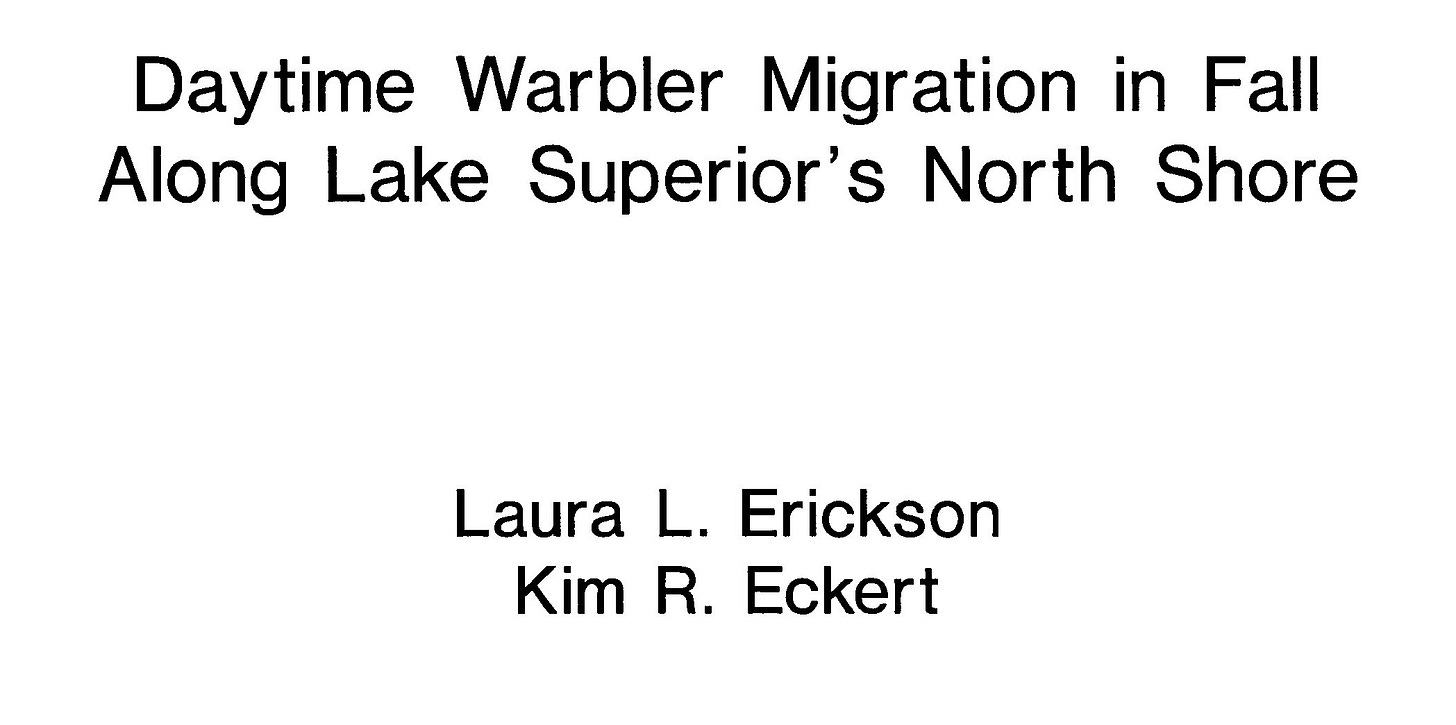
The study of migration becomes more and more complicated as we discover plasticity in what had once been believed to be rigidly fixed processes.
Terrill and Ohmart’s work on Yellow-rumped Warblers, Ketterson and Nolan’s on Dark-eyed Juncoes, studies of Sylviids in Europe, and other research all indicate that in many cases facultative and endogenous factors interact to control physiological preparation, orientation, seasonal timing, and distance traveled. Our analysis of daytime warbler flights along the north shore of Lake Superior suggests that there may also be interaction between facultative and endogenous controls over another aspect of migration: nocturnal rhythm.
American Wood Warblers have long been considered obligate nocturnal migrants. There is an enormous body of field evidence supporting this, including radar studies, moon and call note observations, and birds killed at ceilometers and lighted buildings and towers. Laboratory studies of Zugunruhe patterns suggest that endogenous circadian rhythms influence the timing of nocturnal migration. Although mixed feeding flocks are often seen by day moving in an apparently directed movement toward their migratory destination, this movement is not considered long-distance migration in the same way that steady flight above the tree line is.
Although morning flights over inland areas are known, those described in the literature are of small magnitude and their function is poorly understood, though generally considered to be either continued migration from the previous night or correction for wind displacement accrued during nocturnal flight. Verner Bingman monitored morning migration of nocturnal migrants at a site in inland New York. His intent was to show directionality, not to demonstrate large-scale daytime migration, and the total number of warblers counted during 15 autumn mornings, about 361, included birds observed to be dropping into trees.
Ultimate factors favoring nocturnal flight include cooler, moister air allowing heat loss and water retention, minimal wind velocities, and decreased likelihood of predation by hawks and gulls. By concentrating migratory efforts at night, warblers, which are small insectivores with relatively high energy requirements, can feed in daytime. Warbler vision is adapted for daylight, and their cold-blooded prey species are most available during the warmth of day.
So there are compelling evolutionary advantages to nocturnal migration. But for those warblers migrating from northern Minnesota and central Canada, the risks of flying over Lake Superior are also compelling.
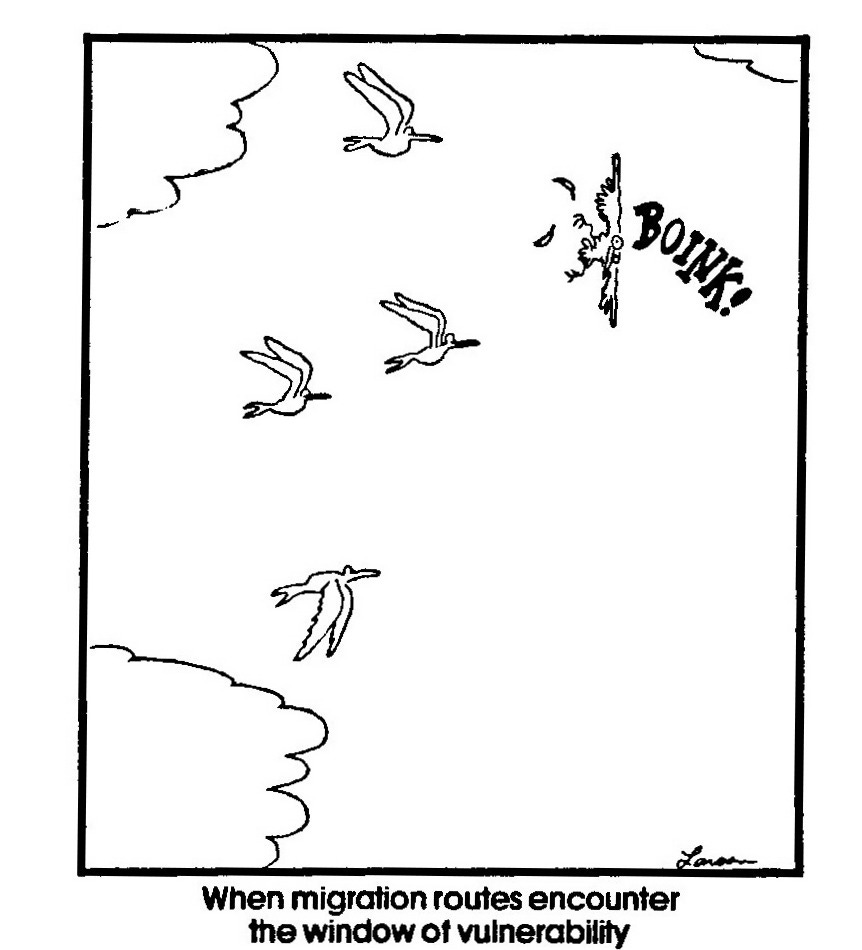
Lake Superior presents a formidable hazard to land birds. In area it is the largest freshwater lake in the world, cold and deep with few islands for refuge. There are many records of migrant mortality in the Great Lakes. When migrating warblers reach the shoreline of Lake Superior, the ability to navigate visually in daytime, using the lake as a lead line, may significantly reduce mortality.
In 1983, in conjunction with Duluth Audubon Society’s annual hawk count at Hawk Ridge Nature Reserve, Kim Eckert organized a dawn count of non-raptors at Hawk Ridge, which is 1.1 miles inland from the Lake Superior shoreline. Several volunteer birders spent the first couple of years improving our techniques of distinguishing birds in flight and counting them accurately and efficiently. Warblers were recognized by their “seet” call notes, their relatively slow, fluttery flight, and their overall size and shape. We counted many warblers flying overhead at this site, most apparently in feeding flocks rather than flying high.
In 1985 and 1987, we received funding to compare hawk migration along the shore to that at Hawk Ridge. We chose as our study site the Lakewood Pumping Station, mainly because we could sit on an easily accessible wall and get a virtually unobstructed view of migration from all directions. Here we watched tens of thousands of corvids, robins, waxwings, blackbirds, and finches flying overhead, all streaming southwest along the shoreline. Because of the requirements of the study, when the hawk flight was large we didn’t count non-raptors, but all in all, in two autumns we counted over 150,000 non-raptors from the Pumping Station. What was most intriguing to me was that here, where we were counting only birds maintaining steady, directed daytime flight, over 20,000 were warblers, which weren’t observed to land despite plenty of suitable forested area, and weren’t observed to be coming in from the lake. The warbler flight was similar in altitude and direction to that of blackbirds, robins, and jays.
In the three autumns beginning in 1988, with funding from the Minnesota Ornithologists’ Union, we started our counts at dawn and continued for a minimum of one hour every day, weather permitting, between August 1 and October 31. On days when the counter could stay longer, we sometimes kept the count going as long as five hours. At the beginning of the season, we took simultaneous, independent counts for comparison. We found that there wasn’t more than a percent or two difference in our totals, though as it happened, those comparisons were made only on slow days when counting was easy. On heavy days, we sometimes had assistants to record data, and occasionally other counters helped. Unfortunately, there were many heavy migration days on which only one counter was available–on those days many birds were missed. We never estimated how many birds were flying–they were always actually counted, so our data represents an under- rather than an over-representation of the actual numbers. It’s likely that some kinglets, vireos, and possibly wrens and small sparrows–all considered to be nocturnal migrants–were included in our totals. Our technique didn’t accurately measure migration, but did provide a reasonable assessment of the relative movements of various birds.
Probably the most significant and surprising finding of our study is the magnitude of daytime warbler movements along the Lake Superior shoreline. A total of 170,915 warblers were counted in 481 hours during the three year period; almost 166,000 during the peak migration between August 23 and October 7.
There was considerable variation in the number of warblers per hour from day to day, from a minimum of 0 to a maximum of 5867. There were 53 days when the count averaged more than 100 warblers per hour; all falling between August 23 and October 7. On 11 days the count averaged more than 1000 warblers per hour.
On slow days, the warbler flight often petered out an hour or so after dawn, which would suggest that morning warbler movements are simply a minor continuation of nighttime flights. But on busy days, the count often increased from hour to hour. For example, over the three year period, there were 31 days when we averaged at least 100 warblers per hour during a minimum 3-hour count. When we divided each second hour total by the corresponding first hour total, we found that the second hour total averaged 106% of the first hour total. The third hour averaged 96% of the first hour. On the 9 days when the count continued for four hours, this pattern was stronger, with each hour’s total relative to the first hour’s steadily increasing. The pattern also held on the 3 days on which the count was maintained for a full five hours. On those three days alone, more than 53,000 warblers were counted, averaging 3550 warblers per hour.
There were no obvious relationships between warbler numbers and barometric pressure, temperature, wind velocity, or cloud cover, but we have not completed a multivariate analysis. We seldom counted during rain, though other researchers have found that few birds migrate in rain.
We did find a powerful relationship between wind direction and the number of warblers flying along the shoreline. Although studies indicate that nocturnal migrants tend to fly with favorable tail winds, we found the greatest flights with cross or headwinds, suggesting that the warblers were using Lake Superior as a lead line. The slowest flights, averaging 10.3 warblers per hour, occurred when the wind was northeast, providing perfect tail wind conditions. Due west crosswinds produced the biggest flights, averaging 726 warblers per hour. With a southwest headwind, the flight averaged 465 per hour. When the wind was light and variable or calm, we averaged 128 per hour.
Wind drift may be responsible for bringing some warblers to Lake Superior in the first place. It is interesting to note that the average number of warblers counted per hour in 1988, 797, was significantly higher than the 425 warblers per hour counted in 1989, or 426 in 1990. The autumn of 1988 was dominated by west winds. Strong westerly winds were recorded for five straight days from September 5th through the 9th, and the Duluth sky became yellowish brown, which the Weather Service attributed to smoke from the Yellowstone fires. On the smokiest day, September 9th, 34 Swainson’s Hawks were recorded at Hawk Ridge, well east of their normal range. Those strong winds may have caused some night-flying warblers to drift toward the shoreline. Of course the drought or the fires themselves may have somehow contributed to that year’s count.
I intentionally do not call this daytime warbler flight “diurnal migration,” because that would imply a regular circadian rhythm rather than a temporary behavioral response to Lake Superior. It would be interesting to conduct a radar study near the shore to learn whether nocturnal flight is suppressed during the conditions associated with daytime flights. Right now we have no idea how many warblers near the shoreline migrate by night instead of or in addition to by day, nor do we know the patterns of movement of night-migrating warblers near Lake Superior in relation to wind direction. We also don’t know whether warblers migrate by day in other places and simply haven’t been recorded. Further study is needed to resolve all these questions.
We do know a few things. The magnitude of the observed flights indicates that daytime warbler migration along the Lake Superior north shore is a significant phenomenon. Because of the increase in numbers from hour to hour on many days, the movements cannot be explained simply as a continuation of nocturnal flight, and because the warblers were not observed landing in nearby trees, they can’t be dismissed as daytime feeding flocks. The vast majority of the warblers observed flew directly into southwest head winds or against west or northwest crosswinds. The simplest explanation is that the Lake Superior shoreline elicits a change in migratory behavior, especially under westerly wind conditions. Once they reach the shoreline, either during nocturnal flights or daytime foraging activities, facultative controls may temporarily override the endogenous nocturnal rhythm of migration, and the birds may then use the shore as a lead line for navigation. Flying by day along Lake Superior may well be of both proximate and ultimate advantage to warblers breeding in northern Minnesota and central Canada.
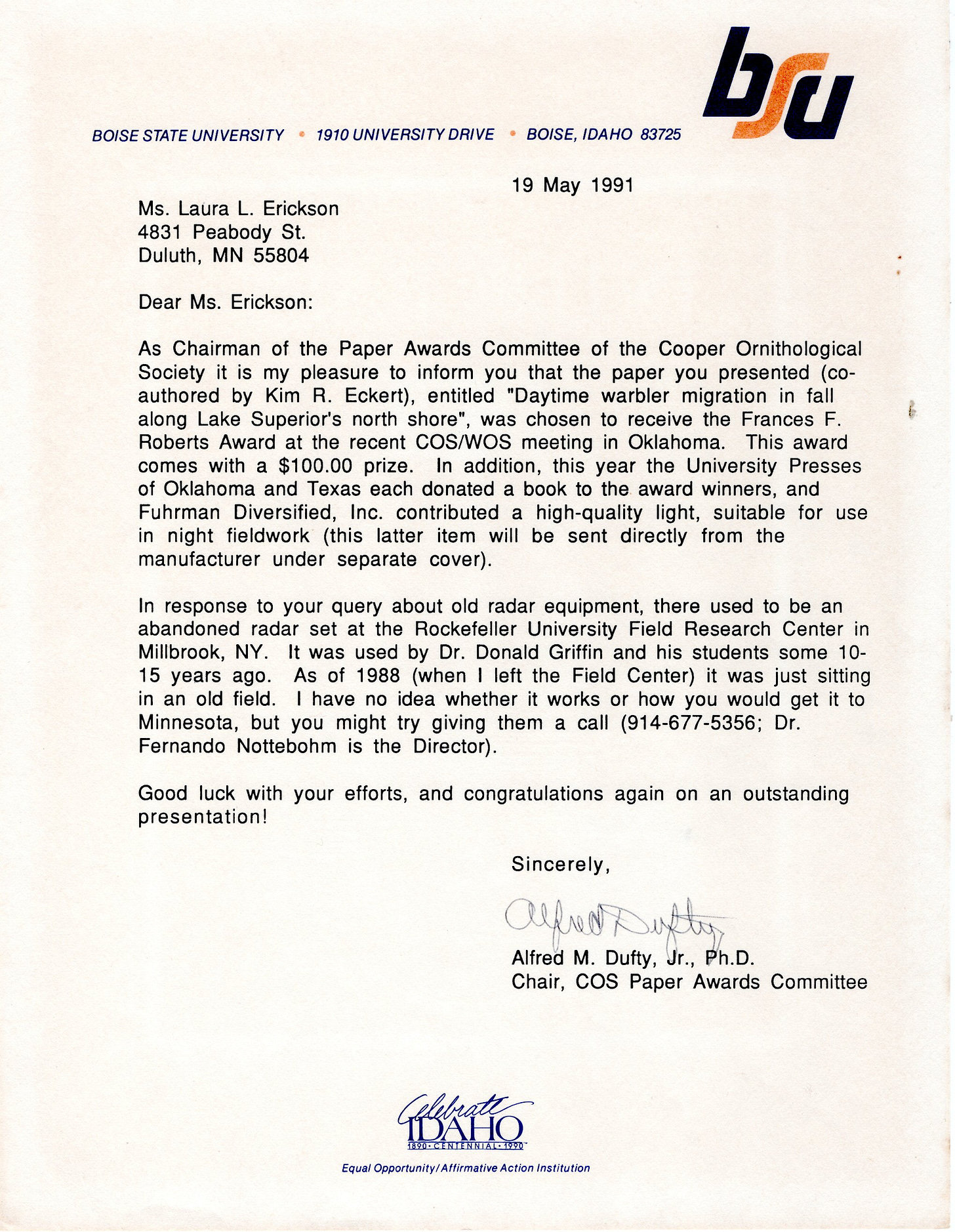



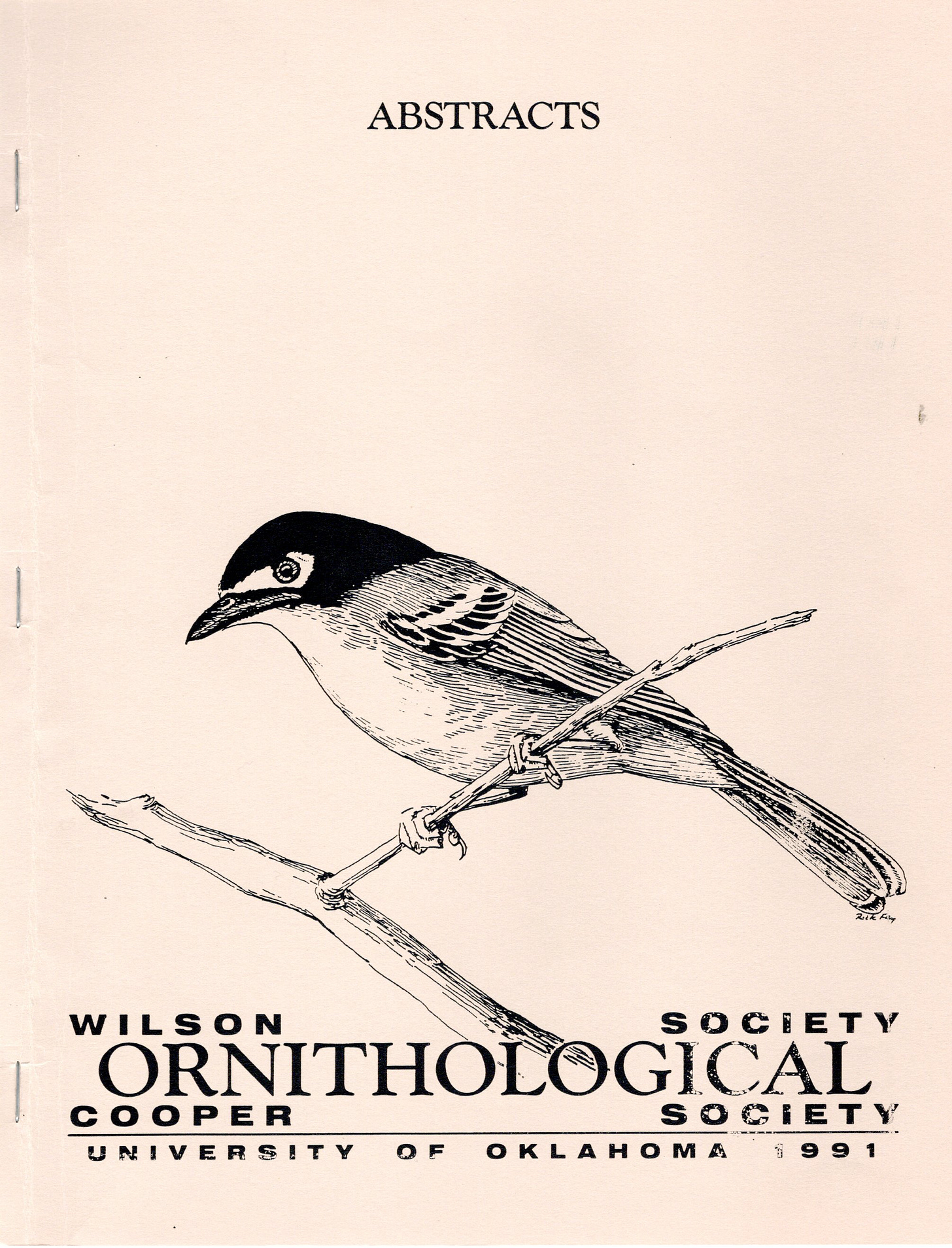
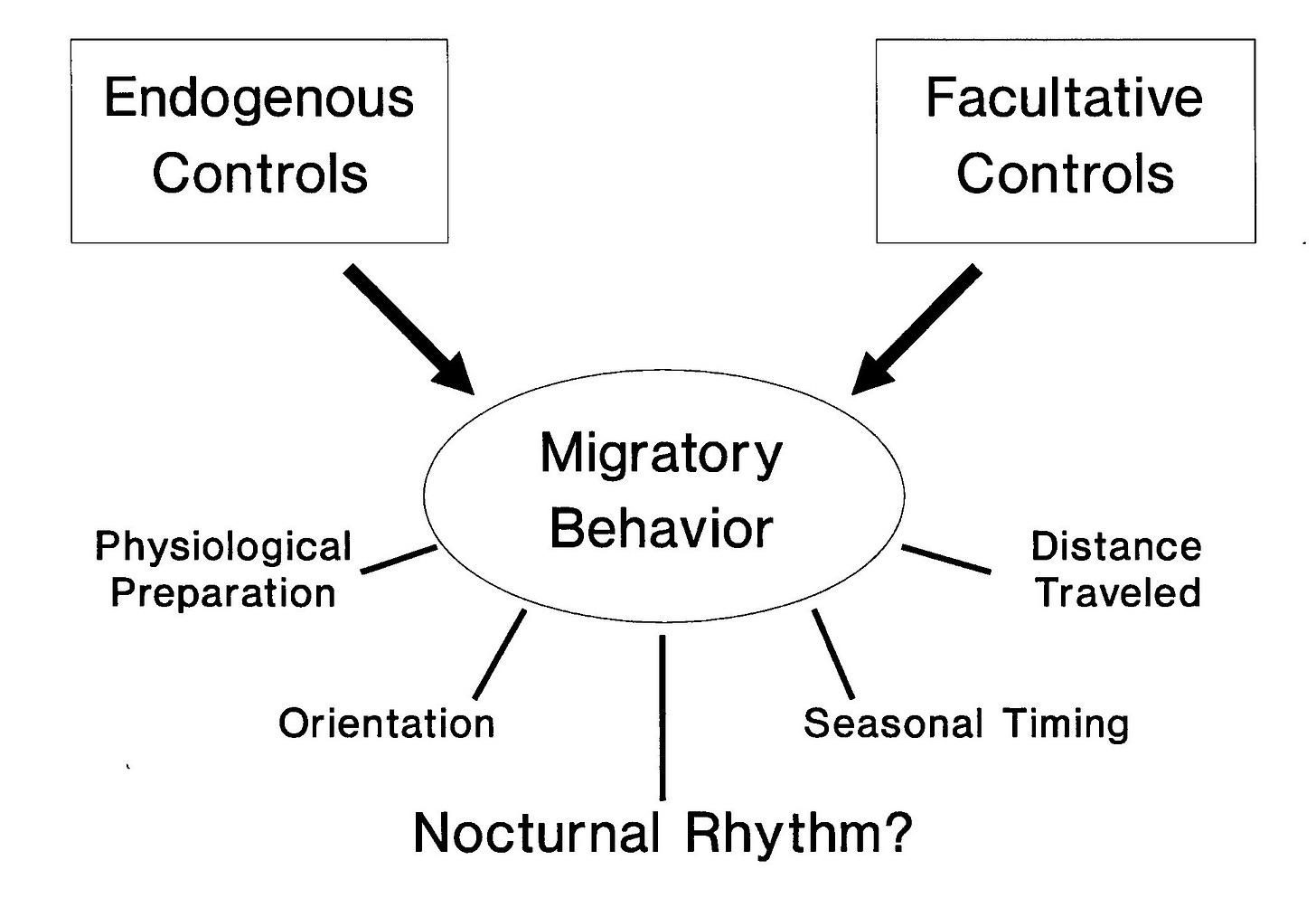
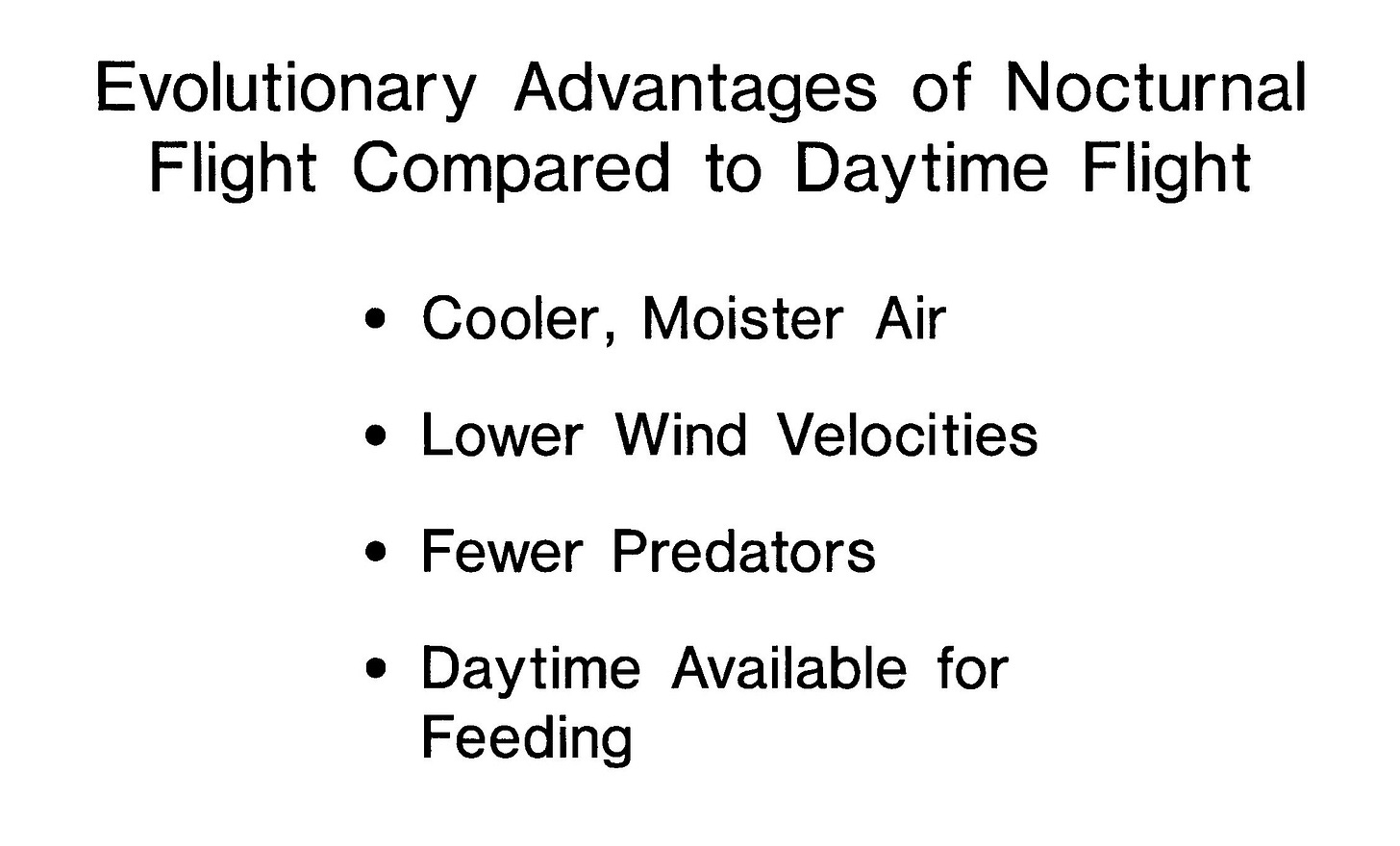
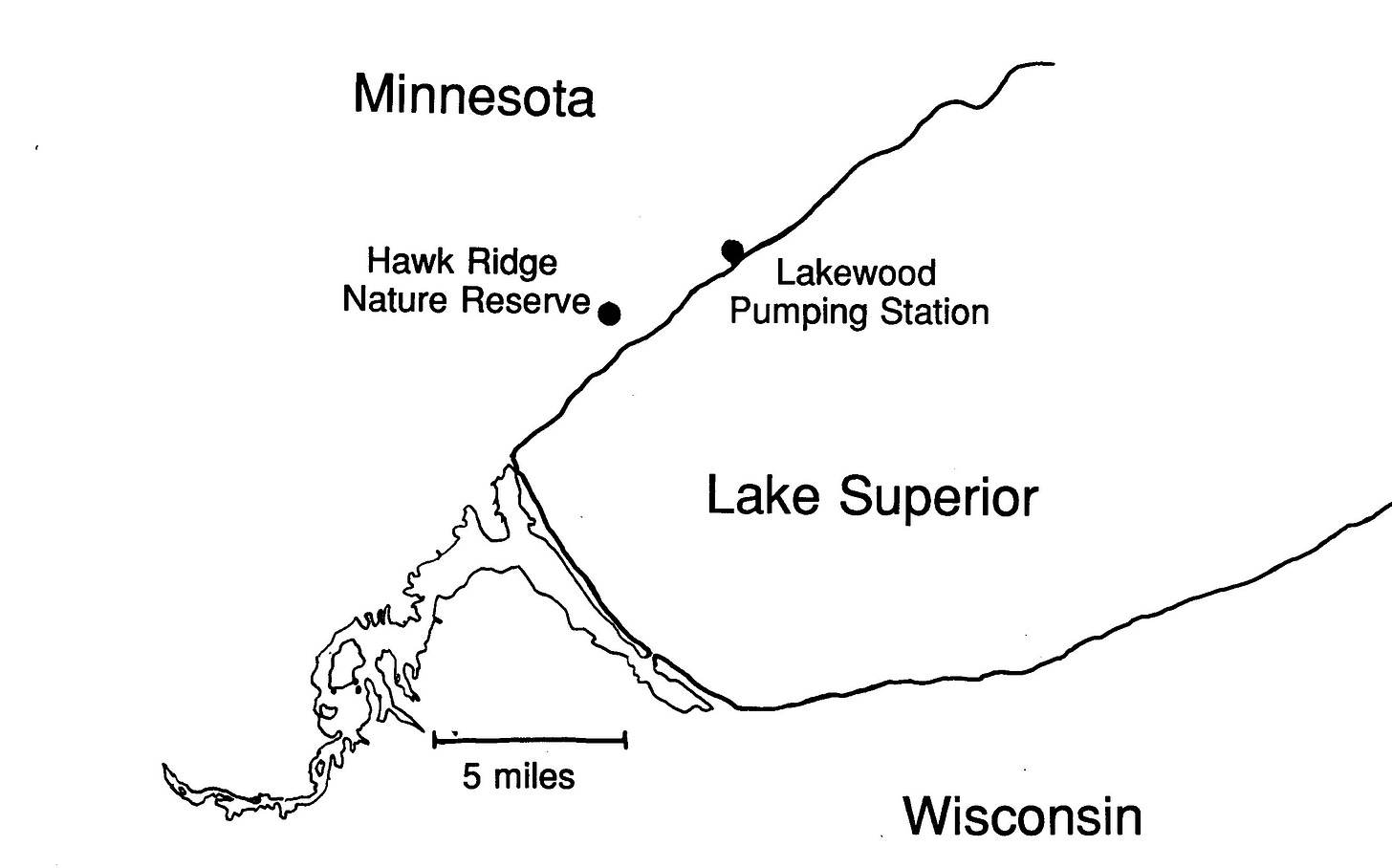
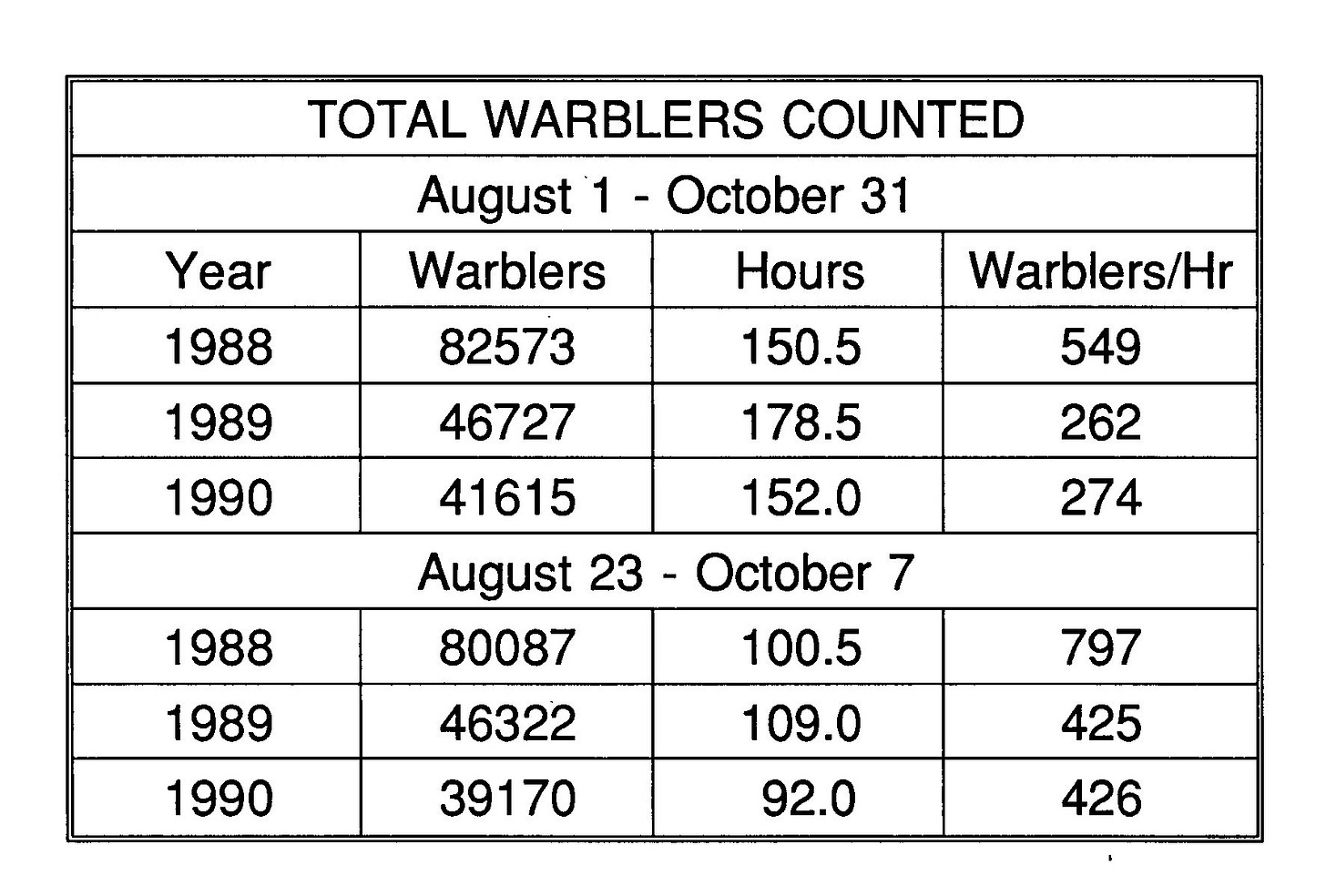
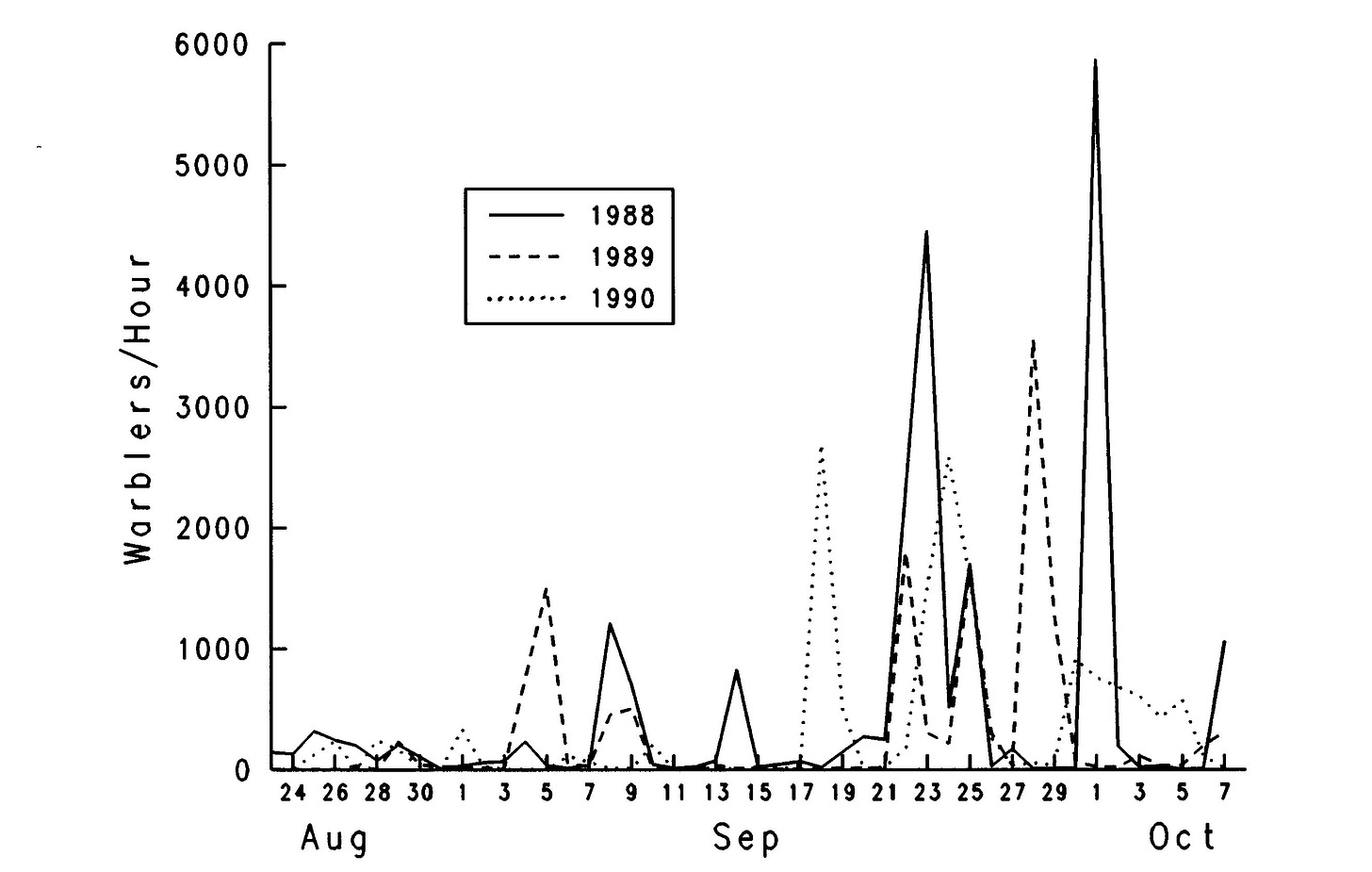
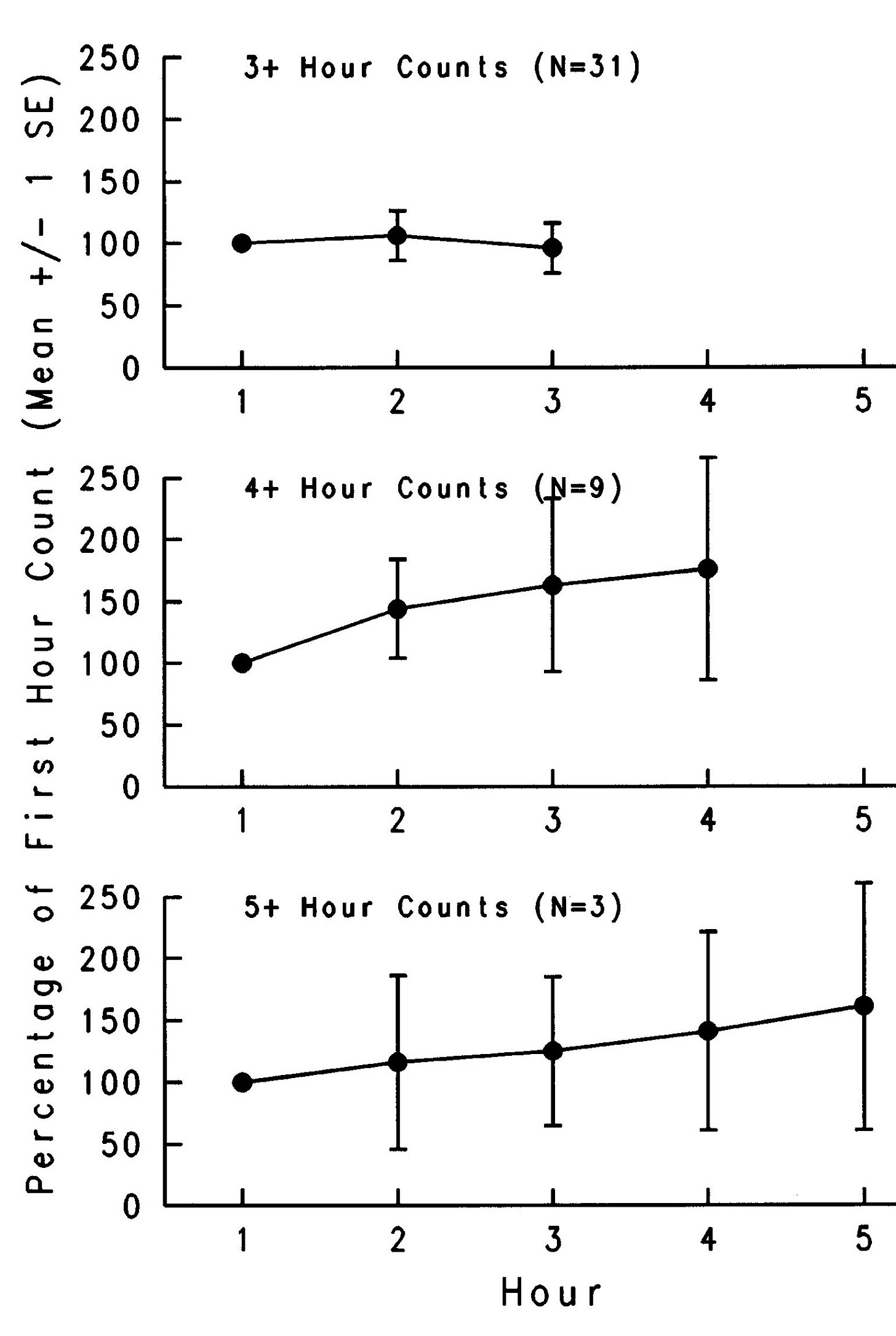
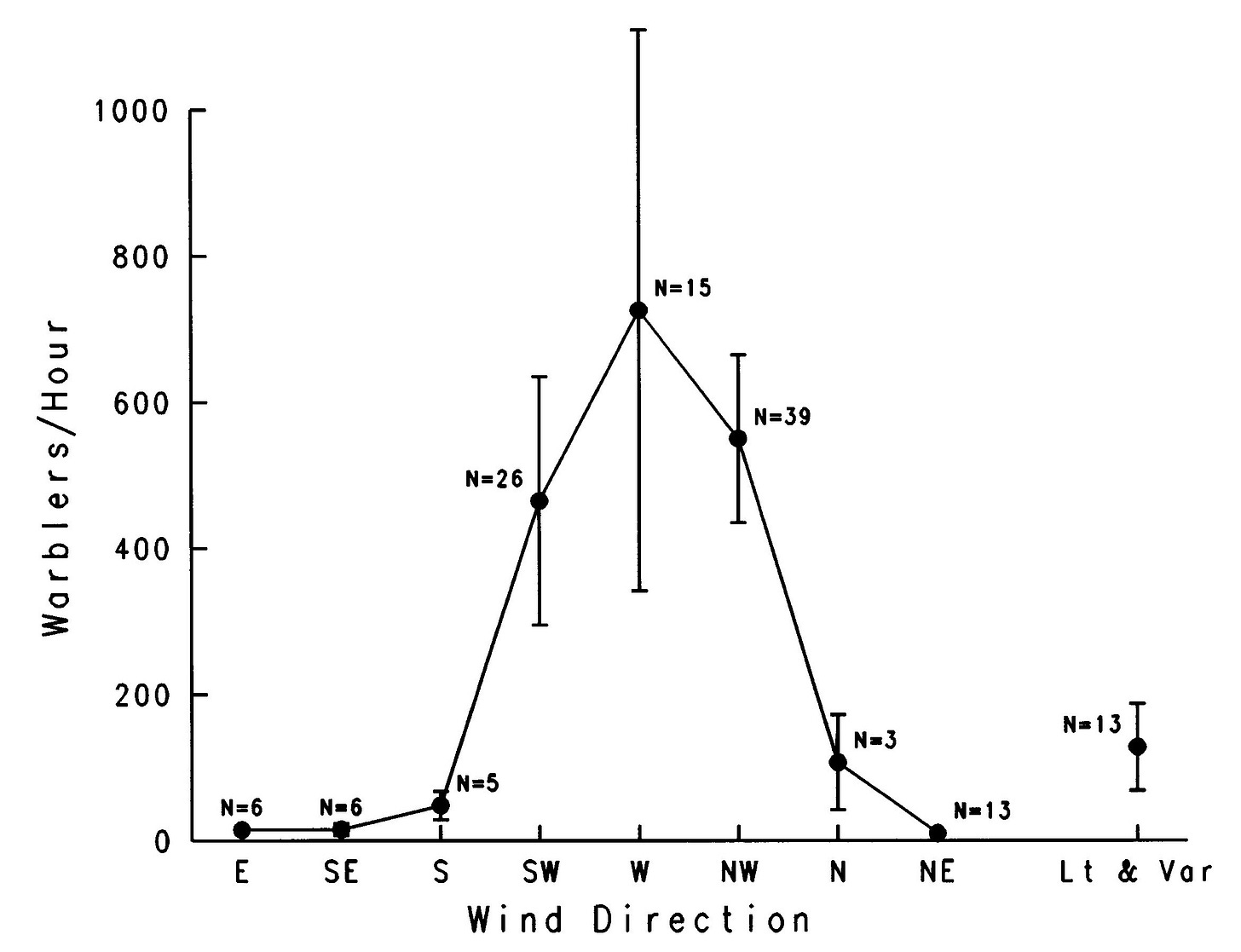
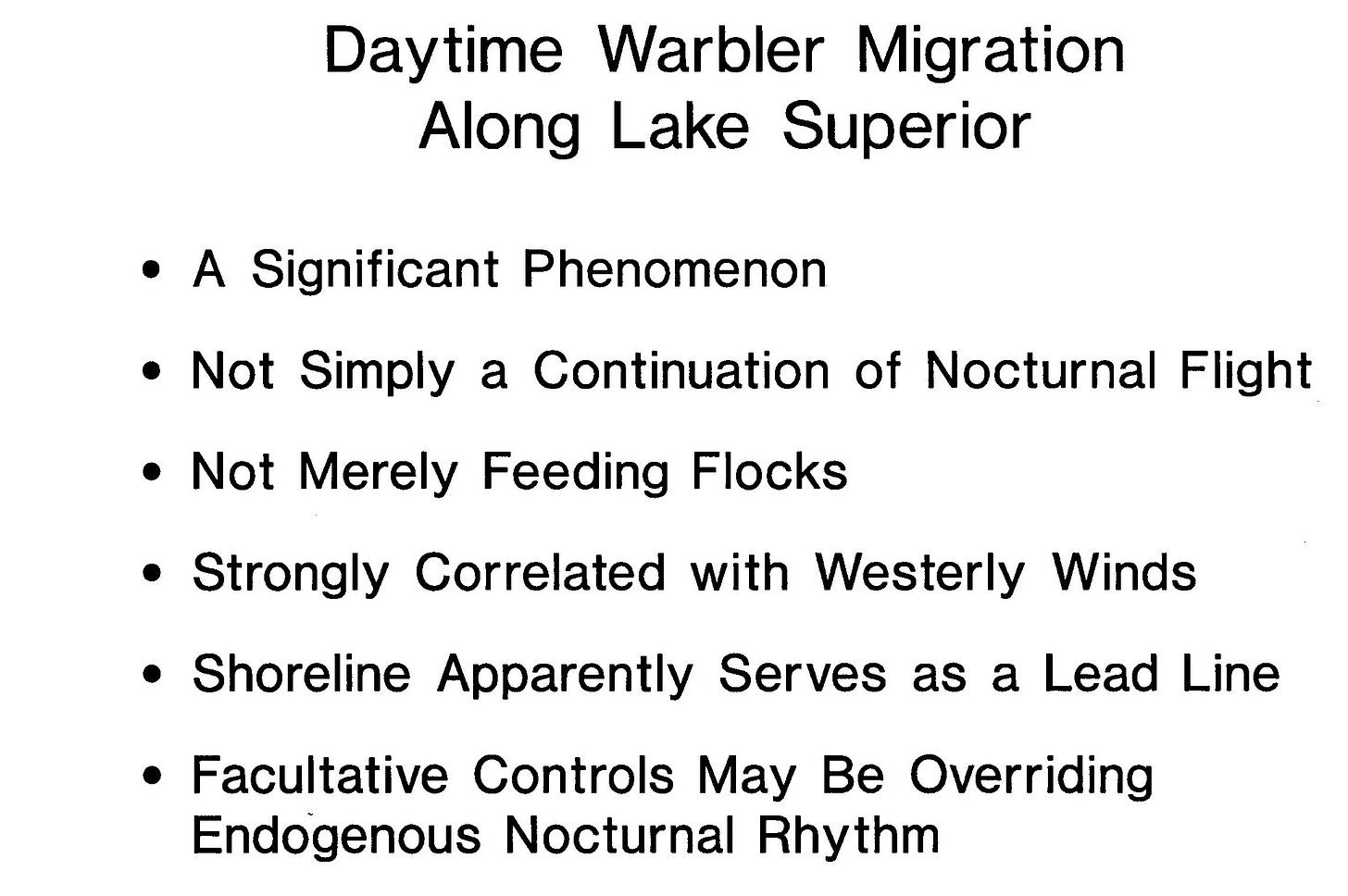
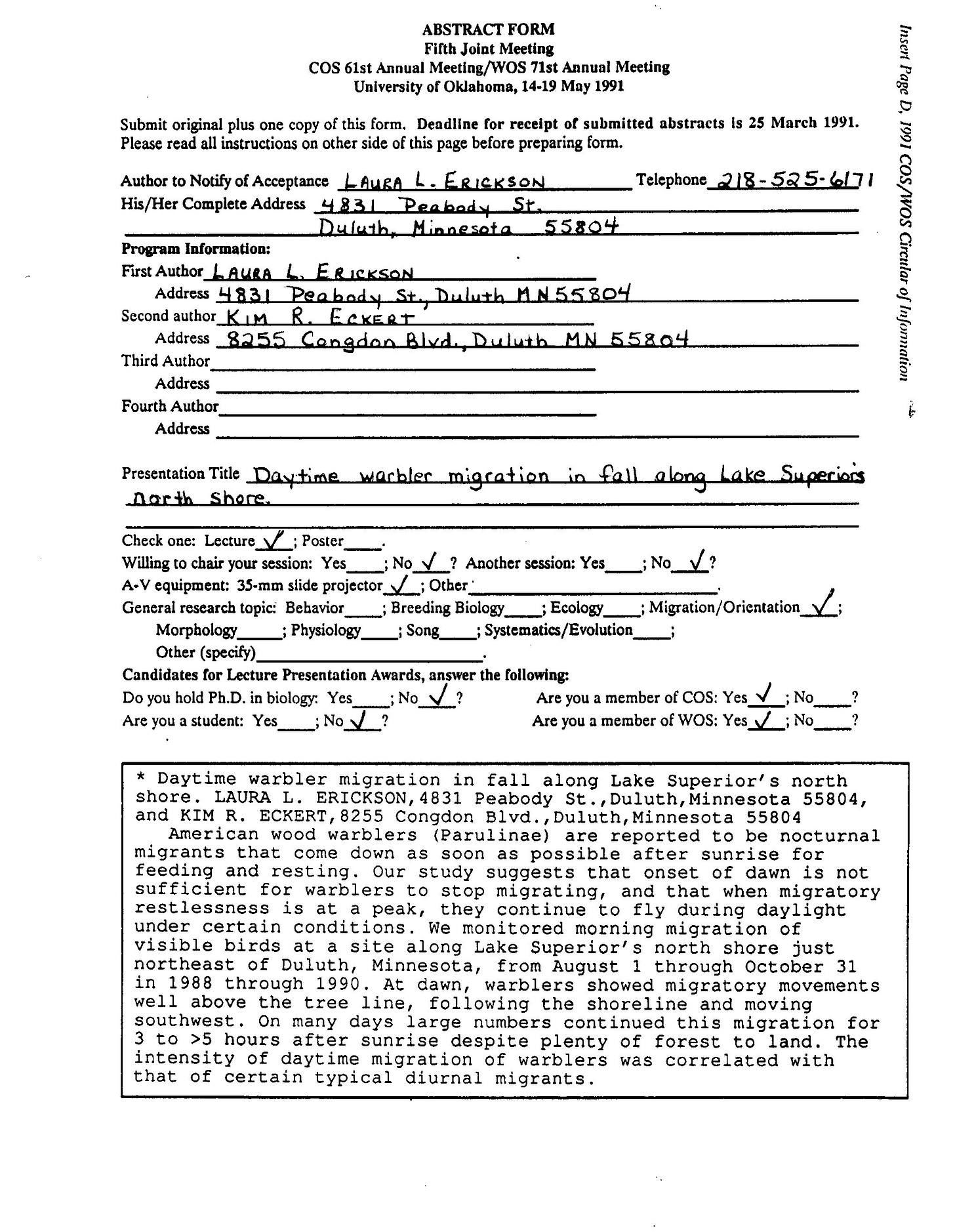
Skimming now, I'll be sure to read later. Excellent. Maybe an update is possible, by someone, if not already out there. Love the simplicity of the conceptual flow chart. Very professional. You've been doing this a long time and your thoughtfulness and EVERTHING shows it. I started with Dr. Klem in August that year. I'm a Johnny-come-lately.